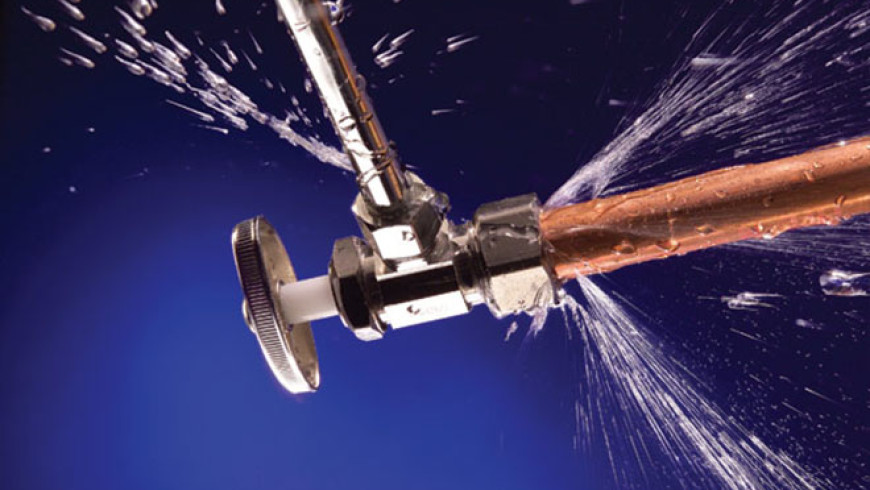Tips for the Six Most Common Causes of Water Leaks in Homes
Tips for the Six Most Common Causes of Water Leaks in Homes
Blog Article
This article which follows on the subject of Most Common Causes of Leaky Pipes is really compelling. Give it a go and draw your own assumptions.

Leaks not just create waste of water yet can additionally trigger unnecessary damage to your home and advertise undesirable natural growth. Sadly, water leaks could go unnoticed because most of the pipework in our home is concealed. By comprehending as well as looking for daily circumstances that create leaks, you can shield your home from future leaks and also unneeded damage. Today, we will consider six leak triggers that might be creating your pipelines to drip.
Intruding roots
A lot of water leakages begin outside the house instead of inside it. If you see an unexpected decline in water pressure, state in your faucet, take time to go out and examine your lawn. You could discover damp spots or sinkholes in your yard, which could mean that tree roots are attacking water lines causing water to permeate out. You can have your plumber check for invasion, specifically if you have trees or shrubs near your building.
Rusty water supply
As time goes by, your plumbing system ages and also corrosion such as corrosion might begin gnawing the pipelines. This might be the root cause of discoloration or bending on your water pipes. This calls for an inspection with your plumber promptly. If our plumbing system is old, take into consideration changing the pipelines because they go to a greater risk of rust than the more recent versions.
Defective Pipe Joints
Pipeline joints can degrade over time, resulting in water leakages. If you have noisy pipes that make ticking or banging sounds, especially when the hot water is transformed on, your pipeline joints are most likely under a great deal of pressure.
Immediate temperature changes.
Extreme temperature adjustments in our pipelines can trigger them to increase as well as contract unexpectedly. This development as well as contraction might create cracks in the pipelines, particularly if the temperature are below freezing. It would certainly be best if you watched on exactly how your plumbing works. The existence of the previously discussed circumstances regularly shows a high threat.
Poor Water Connectors
At times, a leak can be created by loose pipes and also pipes that supply your devices. In case of a water links leakage, you may observe water running directly from the supply line or pools around your appliances.
Blocked Drains
Obstructed drains pipes may be irritating and also inconveniencing, but they can occasionally end up creating an overflow resulting in rupture pipelines. Keep eliminating any type of products that may decrease your drains pipes that can block them to stay clear of such inconveniences.
All the above are reasons for leakages however not all water leakages arise from plumbing leakages; some leakages could originate from roof leaks. All leaks ought to be fixed instantly to prevent water damage.
Leakages not only trigger waste of water however can additionally create unnecessary damage to your home as well as promote unwanted organic growth. By looking and also recognizing for day-to-day situations that cause leaks, you can safeguard your house from future leakages as well as unneeded damages. Today, we will certainly look at six leak triggers that might be creating your pipes to drip.
At times, a leak can be triggered by loosened hose pipes and also pipes that supply your devices. In situation of a water connections leak, you may discover water running straight from the supply line or pools around your devices.
How To Check For Water Leak In Your Home
How To Check for Leaks
The average household's leaks can account for nearly 10,000 gallons of water wasted every year and ten percent of homes have leaks that waste 90 gallons or more per day. Common types of leaks found in the home are worn toilet flappers, dripping faucets, and other leaking valves. These types of leaks are often easy to fix, requiring only a few tools and hardware that can pay for themselves in water savings. Fixing easily corrected household water leaks can save homeowners about 10 percent on their water bills.
To check for leaks in your home, you first need to determine whether you're wasting water and then identify the source of the leak. Here are some tips for finding leaks:
Take a look at your water usage during a colder month, such as January or February. If a family of four exceeds 12,000 gallons per month, there are serious leaks.
Check your water meter before and after a two-hour period when no water is being used. If the meter changes at all, you probably have a leak.
Identify toilet leaks by placing a drop of food coloring in the toilet tank. If any color shows up in the bowl after 10 minutes, you have a leak. (Be sure to flush immediately after the experiment to avoid staining the tank.)
Examine faucet gaskets and pipe fittings for any water on the outside of the pipe to check for surface leaks.
Undetected water leaks can happen without the home or business owner even realizing. If you suspect a water leak, but not able to find the source. It is time to contact a professional water leak detection service, The Leak Doctor.
How To Find a Water Leak In Your Home
https://www.leakdoctor.com/blog/How-To-Check-For-Water-Leak-In-Your-Home_AE197.html

I am just very enthusiastic about How to detect water leaks in your home and I really hope you enjoyed the post. Enjoyed reading our article? Please share it. Let another person locate it. Many thanks for your time. Visit us again soon.
Further Details Report this page